One of my favourite in-house projects has been the ageing of Fender Telecaster bridge plates. I found a method that gave repeatable results that (imo) looked like natural wear.
However in 2019 Fender changed the plating process used on the Pat Pend bridge plates. Instead of the grey matte surface below the pickup hole, it was now a semi-polished bright chrome. Difficult to show in pictures due to reflections, in both pics below the older bridge is on the left hand side.
If the appearance was the only difference I could live with it. However it not only looked different (and imo cheap) it also reacted completely differently to my usual ageing methods. The chrome was much less robust and would flake off. I was unhappy with the results I would achieve with these plates (examples below).
I contacted Fender about this, and was told that it was probably a one-off for that run of plates. However another 2 orders of 100 plates arrived with the vast majority being the new plating, many of which had wear-through on the chrome around the string-through holes, in the packaging! I sold a significant amount of those as b-stock.
At this point I stopped ordering the plates, hoping that I’d see some evidence when the plates were back to the old style.
I haven’t. I’ve been looking at new Fender Telecasters online, in stores, in video demonstrations, and as far as I can see they are still using the newer less robust semi-polished plating. The reason I’m posting this now is because every picture and video of the new American Vintage II Telecasters I have seen shows the shiny plate. Therefore I am still unwilling to place an order for Pat Pend plates, especially with the poor exchange rate!
I am planning to do some tests with the Hosco bridges to see if I can replicate the ageing I like consistently. However I have no definite time frame for that I’m afraid.
I’ve also just started talks with one of my hardware suppliers about replicating the old Fender plating process. However I have no idea what the older plating process was, so if anyone out there knows someone in the plating business who could explain how Fender achieved the old results, please get in touch!
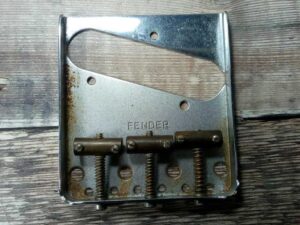
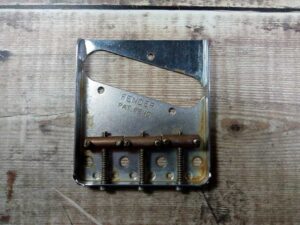
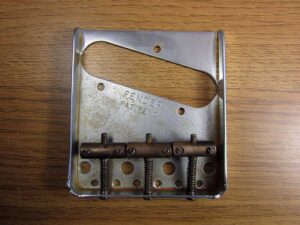
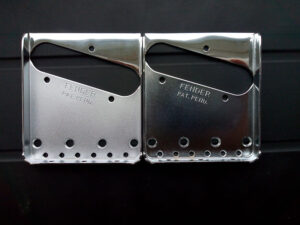
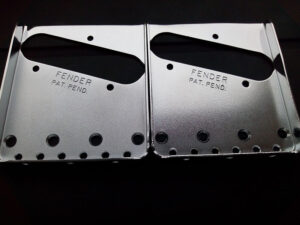
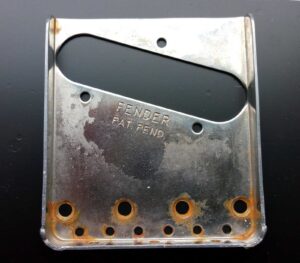

Recent Comments